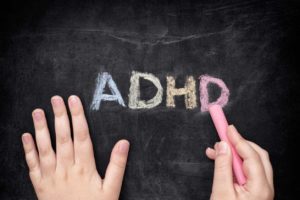

According to the American Psychiatric Association (APA), about five percent of American school-age children have received an ADHD diagnosis. The Center for Disease Control and Prevention (CDC) puts the percentage of ADHD school-age children at more than 11 percent. Regardless of the actual percentage, one question poses several issues for both parents and educators.
Are school-age children diagnosed with ADHD eligible to receive a special education?
The Individuals with Disabilities Education Act (IDEA) represents a four section federal law that “ensures students with a disability are provided with Free Appropriate Public Education (FAPE) that is tailored to their individual needs.” However, IDEA includes language that states a child who possesses a disability is not automatically granted special education status and related services provided in a special education school or classroom.
In late 1991, the Office of Special Education and Rehabilitative Services and the Office of Elementary and Secondary Education took the unprecedented step of publishing a joint memorandum that discussed ADHD and special education services. The two federal government agencies released the memorandum in response to the increase in the number of schools that denied special education services to children who received an ADHD diagnosis. Parents should print and read the memo to answer questions about ADHD student eligibility for special education services. We can help parents access the memo and guide them through the language that clearly defines a school’s legal responsibility under IDEA and Section 504 of the Rehabilitation Act.
The 1991 memorandum defines when ADHD children can receive special education services. Most ADHD children will receive special education services under the “Other Health Impaired” classification. ADHD children might be eligible for special education services if they have coexisting learning disabilities. This is the easiest way for ADHD children to receive special education services. Coexisting psychological conditions include depression, bipolar disorder, behavior disorder, and/or anxiety disorder. The memorandum characterizes emotional disturbances as “an unexplained inability to learn or to form and maintain satisfactory relationships with teachers and peers, inappropriate behavior and feelings, general depression, and physical symptoms or fears resulting from personal or school problems.” In some cases, such as acute inattention, ADHD can qualify a student for special education services, especially if the acute inattention prevents the child from advancing in school.
In 1999, the Department of Education issued regulations that placed ADHD on the list of possible conditions that can place a child in a special education program. The regulations once again emphasized that ADHD “does not automatically mean that all children with ADHD qualify for an Individual Education Plan or other provisions under IDEA.” According to the Office of Special Education Programs (OSEP), “All children are clearly not covered under Part B to receive special education and related services — just as all children who have one or more of the other conditions listed under the ‘other health impairment’ category are not necessarily eligible”
Further complicating the issue is the several levels of ADHD severity. For some children, ADHD symptoms mitigate over time. For other school-age children, ADHD presents a constant impediment to receiving a proper education. The APA constantly modifies its list of ADHD symptoms, which influences the decision on whether to place an ADHD school-age child in a special education program.
Our law firm helps parents understand the connection between ADHD and the statutes written into IDEA and other special education laws. To learn more about ADHD and special education, contact one of our special education attorneys to schedule a free initial consultation.